Dental Amalgam Filling Replacement
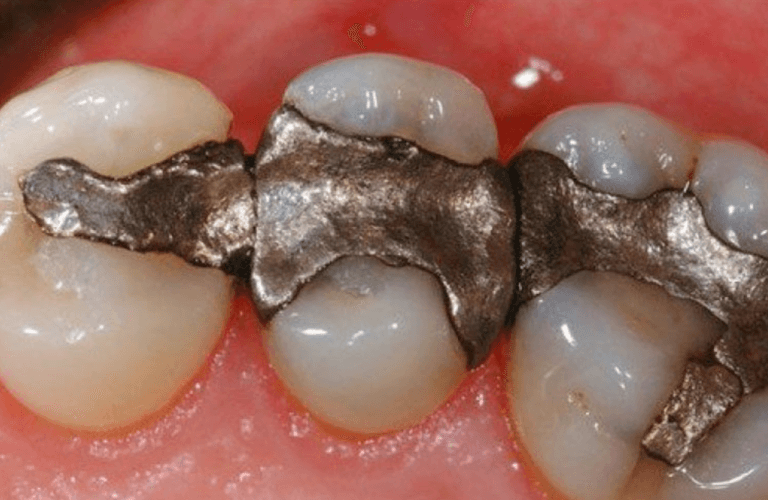
What Is Dental Amalgam Filling Replacement?
Dental amalgam filling replacement involves removing old amalgam (silver) fillings and replacing them with newer, more biocompatible materials such as composite resin, porcelain, or glass ionomer. Amalgam fillings have been used for decades due to their strength, durability, and ability to withstand chewing forces. However, concerns about the mercury content in amalgam fillings have prompted many patients to seek alternatives.
The amalgam filling replacement process is designed to improve the safety, appearance, and function of your teeth. If you’re thinking about replacing your silver fillings, here’s everything you need to know:
- What Are Dental Amalgam Fillings?
- Are Dental Amalgam Fillings Safe?
- Who Should Consider Amalgam Filling Replacement?
- What Are The Advantages Of Dental Amalgam Filling Replacement?
- What Are The Different Types Of Amalgam Filling Alternatives?
- How Much Does Dental Amalgam Filling Replacement Cost?
- What Are The Steps In The Dental Amalgam Filling Replacement Procedure?
- How Long Does Dental Amalgam Filling Replacement Last?
If you have any further questions about Dental Amalgam Filling Replacement or other dental services offered at Atlas Dental, please contact us.

Free phone consultation
Have questions about dental amalgam replacement? Schedule a free phone consultation with our Toronto dentist.

5 star google reviews
Our patients love us! See for yourself why more and more people are choosing Atlas Dental for their dental fillings.

Book Emergency tooth filling
Do you think you have a tooth filling emergency and need an appointment? Book an emergency tooth filling online.
What Are Dental Amalgam Fillings?
Amalgam fillings are a blend of metals, including silver, tin, copper, and mercury. This material has been widely used for over 150 years due to its durability and cost-effectiveness, especially for back teeth that endure heavy chewing. Despite the strength of amalgam, it is most recognizable by its silver color, which can be quite visible when you speak or smile.
Concerns about mercury in dental amalgam have led to its declining popularity in favor of tooth-colored alternatives that blend naturally with your teeth. Patients now have more choices when it comes to selecting a suitable dental filling material based on their individual preferences, dental needs, and concerns about mercury exposure. If you have further questions about Dental Amalgam Fillings, please contact us.
Are Dental Amalgam Fillings Safe?
According to organizations such as the American Dental Association (ADA) and the Canadian Dental Association (CDA), amalgam fillings are generally safe. However, the mercury content has raised concerns for some, as dental amalgam consists of about 50% mercury by weight. While research shows that mercury exposure from these fillings is minimal and poses no significant health risk for most individuals, some people choose to avoid them due to personal health preferences.
If you’re considering removing your amalgam fillings due to concerns about mercury exposure, your dentist can offer mercury-free options such as composite resin or porcelain. Dentists are trained to consider the individual’s oral health needs, preferences, and any specific health considerations when recommending dental restorations. If you have further questions about the safety of Dental Amalgam Fillings, please contact us.
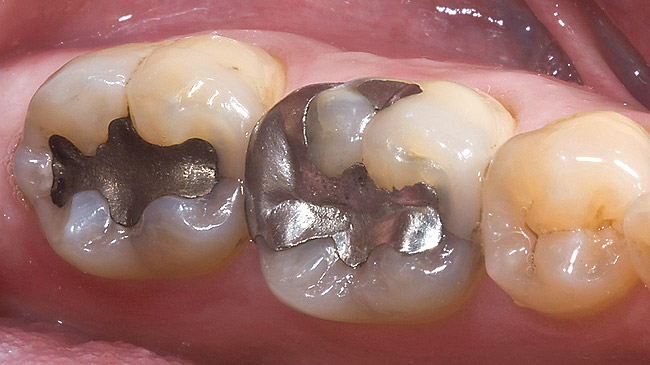
Who Should Consider Amalgam Filling Replacement?
Dental amalgam filling replacement is a consideration for several groups of individuals, each with their unique reasons and dental health goals. If you currently have dental amalgam fillings or are considering them as a treatment option, the following scenarios might indicate that you could benefit from dental amalgam filling replacement:
- Concerns about Mercury Content: One of the primary reasons individuals seek amalgam filling replacement is due to concerns about the mercury content in traditional amalgam fillings. While dental amalgam has been deemed safe for most people by various health organizations, some patients prefer to minimize their exposure to mercury. If you are worried about the potential health implications associated with mercury, discussing amalgam filling replacement with your dentist may provide peace of mind.
- Aesthetic Reasons: Amalgam fillings are known for their distinct silver color, which can be quite noticeable when you smile or laugh. For those who prioritize a more natural appearance, replacing amalgam fillings with tooth-colored alternatives can offer a significant cosmetic enhancement. Tooth-colored fillings, such as composite resin, can be matched to the shade of your natural teeth, creating a seamless and attractive smile.
- Allergic Reactions or Sensitivities: In rare cases, some individuals may experience allergic reactions or sensitivities to the metals used in amalgam fillings. Allergic responses could manifest as oral discomfort, inflammation, or other adverse reactions. If you suspect that you might be sensitive to amalgam materials, consulting your dentist about alternative filling options is essential for your oral health and overall well-being.
- Wear or Deterioration of Existing Fillings: Over time, dental amalgam fillings can experience wear and tear, potentially leading to fractures, leaks, or deterioration. Regular dental check-ups can help identify any issues with existing fillings. If your dentist recommends replacing aged or compromised amalgam fillings, it is crucial to consider the available alternatives that best suit your dental needs.
- Upgrading to Modern Dental Materials: With advancements in dental technology, there is now a wide array of dental materials available that offer improved durability and biocompatibility. Some patients may opt for amalgam filling replacement to upgrade their dental restorations to more modern materials, enhancing their oral health and overall dental experience.
- Comprehensive Dental Restoration: In cases where a patient requires extensive dental restorations due to multiple cavities or damaged teeth, amalgam filling replacement can be part of a broader treatment plan. By replacing old amalgam fillings during comprehensive dental restoration, patients can achieve better long-term dental health outcomes.
Regardless of the reasons behind considering dental amalgam filling replacement, it is crucial to consult with a qualified and experienced dentist. A dental professional will evaluate your unique dental situation, discuss the available options, and recommend the most suitable course of action to meet your dental health goals. Remember that proactive dental care and open communication with your dentist play pivotal roles in maintaining a healthy and radiant smile. If you have further questions about Dental Amalgam Filling Replacement, please contact us.
Benefits of Dental Amalgam Filling Replacement
Replacing your amalgam fillings comes with several advantages:
- Reduced Mercury Exposure: Replacing amalgam fillings eliminates mercury from your mouth, offering peace of mind for those concerned about mercury toxicity.
- Improved Aesthetics: Tooth-colored materials like composite resin blend seamlessly with your natural teeth, giving you a more attractive smile.
- Better Biocompatibility: Modern filling materials are less likely to cause allergic reactions and are safer for patients with sensitivities to metals.
- Stronger Bonding: Tooth-colored fillings bond directly to your teeth, preserving more of your natural tooth structure and reducing the risk of future fractures.
- Durability and Longevity: Today’s composite resins and ceramics are highly durable and can last for many years with proper care.
- Environmentally Friendly: By choosing mercury-free fillings, you are contributing to a more eco-friendly choice for your dental health.
Before making any decisions, it is essential to consult with a qualified dentist who can assess your unique dental needs and guide you in selecting the most suitable dental filling materials for you. If you have further questions about Dental Amalgam Filling Replacement, please contact us.
What Are the Alternatives to Amalgam Fillings?
Several options are available for those looking to replace their amalgam fillings:
- Composite Resin: Tooth-colored and highly durable, composite resin is one of the most popular choices for replacing amalgam fillings. It bonds directly to the tooth structure, reducing the risk of future fractures.
- Porcelain: Porcelain fillings are strong and long-lasting, making them ideal for patients looking for a durable and natural-looking option.
- Glass Ionomer: This material releases fluoride over time, helping to protect the tooth from further decay. While not as strong as composite resin, it is an excellent choice for small fillings or patients with special dental needs.
Each amalgam filling alternative comes with its unique advantages and considerations. Your dentist will assess your specific dental needs and discuss the most suitable filling material for your individual case. If you have further questions about Dental Amalgam Filling Replacement, please contact us.
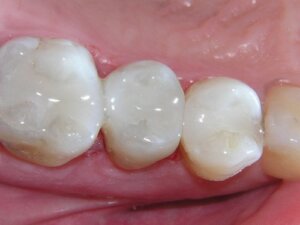
Cost of Dental Amalgam Filling Replacement
The cost of a dental amalgam filling replacement is the same price as a new dental filling.
Whether it is an amalgam filling, composite resin filling, or glass ionomer filling, the cost of any of these Dental Fillings are similar and will depend on the location of the tooth (anterior, bicuspid or molar), as well as the size of the filling, which is translated as the number of “surfaces” involved. Imagine each tooth as a 5 surface box. Each “surface” that gets incorporated will dictate the size (and overall cost) of the tooth filling. Therefore, the cost of a filling can range between $200-460. The codes relevant to dental fillings in the Ontario Dental Association’s Suggested Fee Guide appear as follows:
Permanent Anteriors:
- 23111 – One surface: $200
- 23112 – Two surfaces: $250
- 23113 – Three surfaces: $300
- 23114 – Four surfaces: $370
- 23115 – Five surfaces (maximum surfaces per tooth): $390
Permanent Bicuspids:
- 23311 – One surface: $220
- 23312 – Two surfaces: $275
- 23313 – Three surfaces: $330
- 23314 – Four surfaces: $400
- 23315 – Five surfaces or maximum surfaces per tooth: $420
Permanent Molars:
- 23321 – One surface: $240
- 23322 – Two surfaces: $300
- 23323 – Three surfaces: $360
- 23324 – Four surfaces: $440
- 23325 – Five surfaces or maximum surfaces per tooth: $460
Dental Fillings are considered a basic service under all dental insurance plans and should be covered to your maximum insurable limit, but be sure to find out from your dental insurance plan provider how much you are eligible for before going ahead with dental treatment. Our fees are consistent with the ODA Fee Guide.
For patients without dental insurance, Atlas Dental is pleased to offer dental financing through Dentalcard. Affordable payment plans start at 7.95% for terms of 6 months to 6 years. To learn more about Dentalcard dental treatment financing, follow this link.
What Are The Steps In The Dental Amalgam Filling Replacement Procedure?
Replacing amalgam fillings involves several careful steps:
- Comprehensive Examination: The dentist evaluates the condition of your amalgam fillings and overall oral health, using X-rays or diagnostic tools to assess the situation fully.
- Treatment Planning: Your dentist will create a treatment plan and recommend alternative filling materials, considering both your health needs and cosmetic preferences.
- Local Anesthesia: The dentist administers anesthesia to numb the treatment area for a pain-free experience.
- Tooth Isolation: A dental dam may be used to isolate the tooth, keeping it dry and protecting the mouth from debris.
- Amalgam Removal: The existing amalgam filling is carefully removed using specialized tools, with precautions taken to minimize mercury exposure.
- Tooth Preparation: The tooth is then prepared for the new filling material, which may involve etching to promote bonding.
- Filling Placement: The chosen filling material is applied in layers and shaped to fit the natural contours of your tooth.
- Curing: If necessary, a curing light is used to harden the filling.
- Bite Adjustment and Polishing: The dentist ensures proper alignment and polishes the filling for a smooth finish.
By following these steps with precision and expertise, your dentist can help you achieve a healthier, more aesthetically pleasing smile and a positive dental experience. As with any dental procedure, it is essential to follow your dentist’s instructions and attend regular dental check-ups to maintain your oral health over time. If you have further questions about Dental Amalgam Filling Replacement, please contact us.
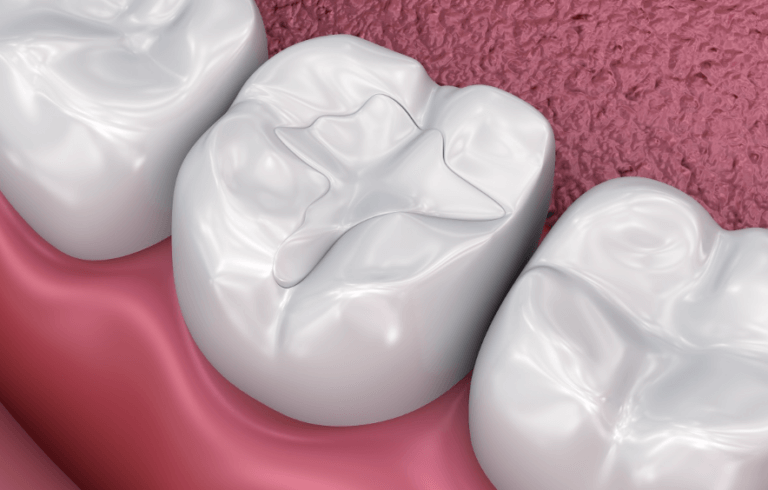
How Long Does Dental Amalgam Filling Replacements Last?
The lifespan of a dental filling depends on several factors:
- Filling Material: Amalgam and gold fillings can last longer (15-20 years) compared to composite or porcelain fillings (7-10 years).
- Tooth Condition: Teeth with more extensive damage may require additional treatments like crowns to support the filling.
- Bite Pressure: Fillings in high-stress areas, such as molars, can wear out more quickly.
- Oral Hygiene: Good hygiene and regular dental visits can help maintain fillings for longer.
- Diet and Habits: A healthy diet and avoiding damaging habits like teeth grinding will also extend the life of your fillings.
While fillings can last many years, regular dental check-ups are vital to monitor their condition and replace them if necessary. If you have further questions about your fillings, contact us for a consultation. If you have further questions about Dental Amalgam Filling Replacement, please contact us.
We also think you’ll like…
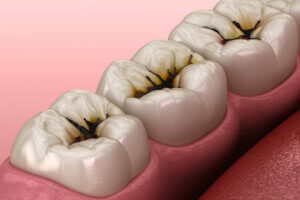
Reversible Pulpitis
Reversible Pulpitis What Is Reversible Pulpitis? If you’ve ever experienced a sharp, fleeting toothache when indulging in your favorite ice cream or a hot cup
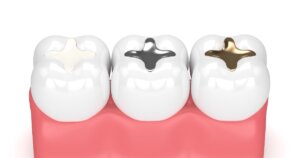
Dental Filling Post-Operative Instructions
Dental Filling Post-Operative Instructions Dental Filling Post-Operative Instructions: How to Care for Your Teeth After a Filling At Atlas Dental, we understand that receiving a
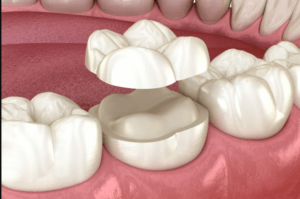
Porcelain Onlay
Porcelain Onlay What Is A Porcelain Onlay? A Porcelain Onlay is a type of dental restoration that is used to repair a damaged or decayed
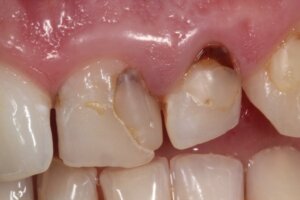
Discolored Filling
Discolored Filling What Is A Discolored Filling? A discolored filling is a dental restoration that has changed color over time, often becoming darker or yellowed
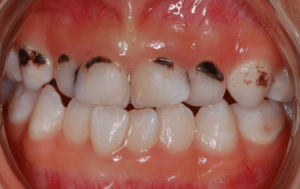
Silver Diamine Fluoride
Silver Diamine Fluoride What Is Silver Diamine Fluoride? Silver Diamine Fluoride (SDF) is a liquid substance used in dentistry to treat and prevent tooth decay
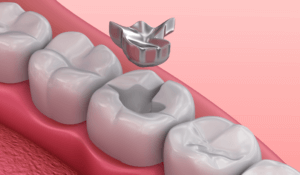
Amalgam Filling
Amalgam Filling What Is An Amalgam Filling? An Amalgam Filling is a durable dental filling material used to restore teeth compromised by dental caries (cavities).

